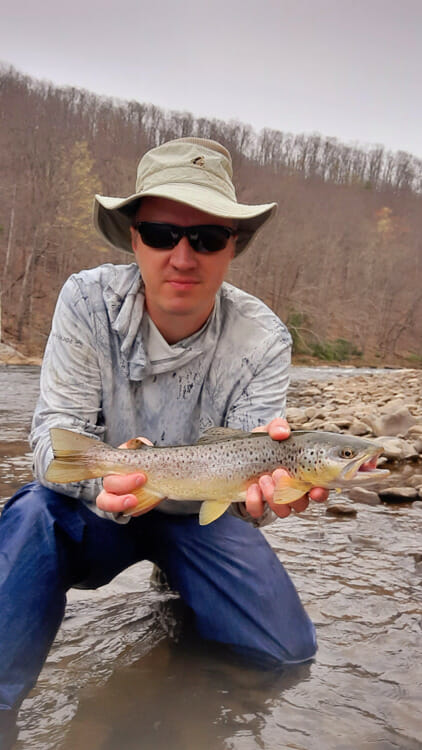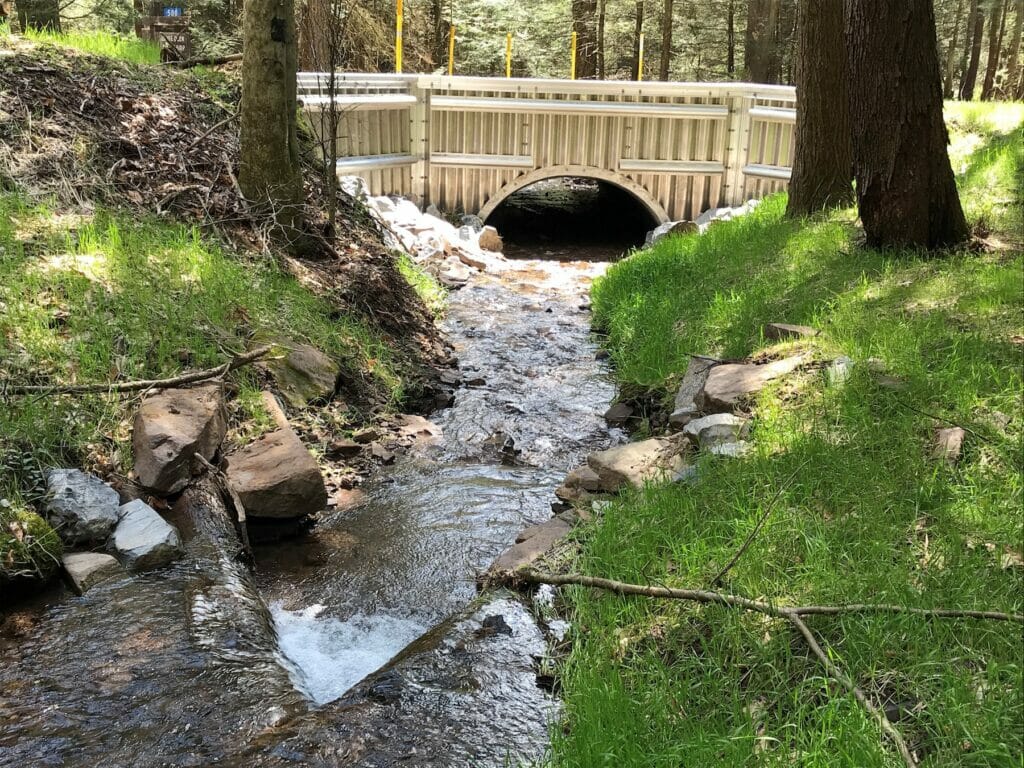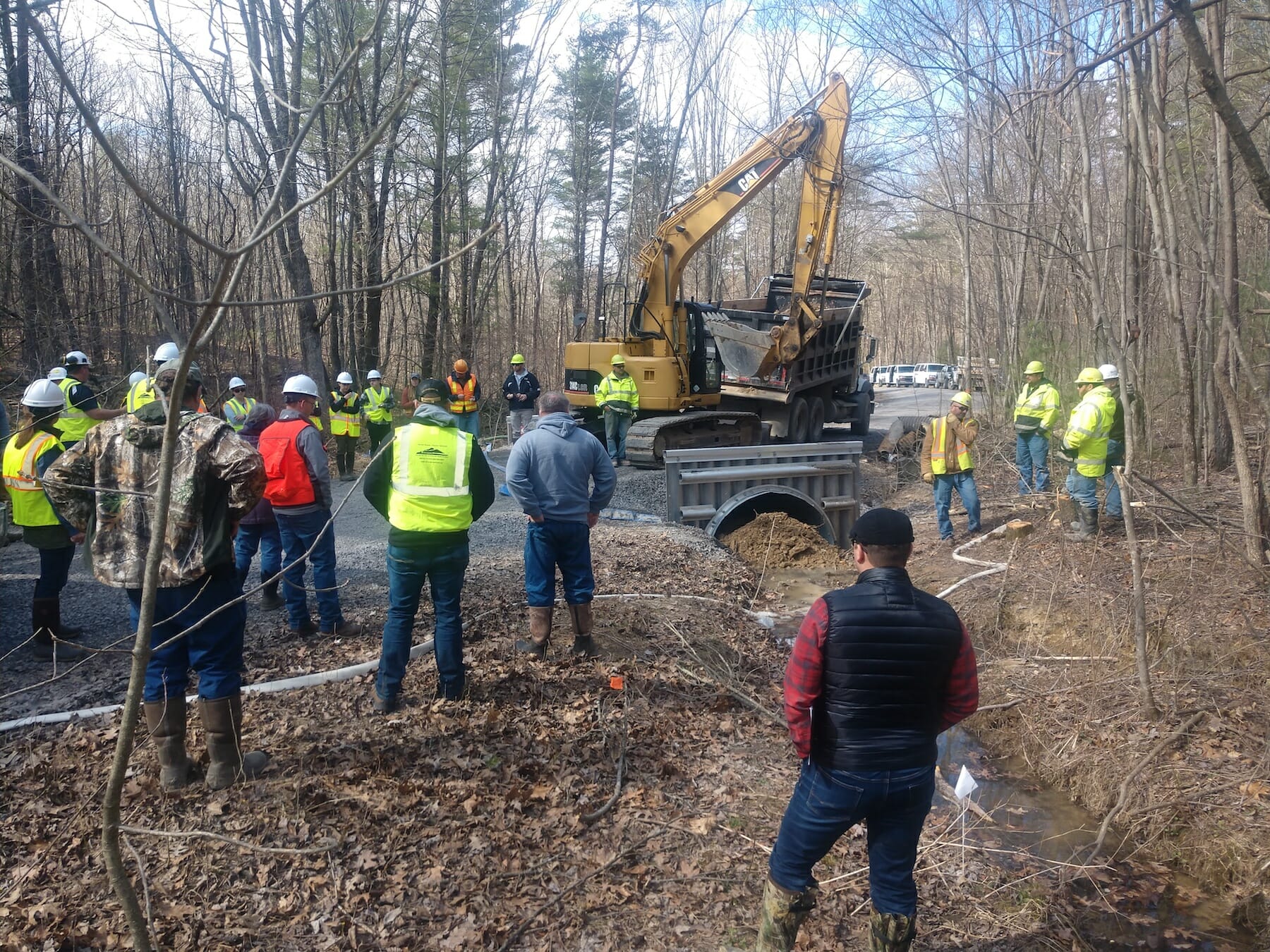Penn State’s Bloser makes the connection for anglers
In populated trout country, streams and roads are in frequent contact with one another. How those roads — including bridges — function is critically important to the health of those streams and the browns, brookies and rainbows that live in them.
In Pennsylvania, the Center for Dirt and Gravel Roads Studies at Penn State works with Trout Unlimited and other partners to make roads better, which makes streams better, which makes fishing better. TU recently caught up with Steve Bloser, the center’s director, to learn more about how healthier dirt and gravel roads help contribute to healthier trout fisheries.
TU: Just what is the Center for Dirt and Gravel Road Studies?
Bloser: The CDGRS is a nonprofit outreach Center at Penn State University that provides education, outreach, technical assistance, and a variety of other services in support of Pennsylvania’s Dirt, Gravel and Low Volume Road DGLVR Program. While the Center leads some small research projects, the majority of its efforts focus on educating local public road owning entities about better road maintenance practices.
TU: What are the basics of the DGLVR Program?

Bloser: The DGLVR program, administered by the Pennsylvania State Conservation Commission and the Pennsylvania Department of Conservation and Natural Resources, funds projects on local publicly owned roads that seek to not only improve the road, but to reduce the environmental impacts of the road on local waterways. The DGLVR program funds $35 million annually in these local “sustainable road” projects.
TU: Can you describe the historical context of TU’s involvement in what eventually became the DGLVR program and Center?
Bloser: The Pennsylvania Council of TU was the major driver for the establishment of the DGLVR program. In addition to spearheading early workgroups, TU volunteers took it upon themselves to drive thousands of miles of Pennsylvania’s backroads to create an inventory of “pollution sites” that helped to establish the DGLVR program in 1997. This led to the establishment of the Center at Penn State to support the Program’s efforts in 2000.
TU: How does the DGLVR program’s work benefit trout and coldwater streams in Pennsylvania?
Bloser: Every project that the DGLVR program funds on local roads must have some kind of environmental benefit. Most often this takes the form of erosion reduction and stormwater management to reduce sediment pollution impacts to waterways.
Since a funding increase in 2014, the program has also seen a large increase in projects that replace stream crossing structures (culverts and bridges). The program prioritizes crossings that are undersized, which frequently create barriers to aquatic organisms including trout, and has implemented policies to ensure increased stream function and continuity using larger and properly installed structures.

TU: Can you talk a little about the current relationship between the DGLVR program, the Center, and TU?
Bloser: Many of the goals of the Center, the DGLVR program, and TU are well aligned when it comes to providing aquatic organism passage and stream continuity for stream crossing replacements. TU staff currently provide technical assistance, both in the field and in developing guidance, concerning stream crossing replacements funded by the program. Largely due to this ongoing collaboration, the relationship between the Center, the State Conservation Commission’s portion of the program, and TU has never been stronger.
TU: What is your proudest accomplishment in partnering with TU?
Bloser: I think it would have to be the continuing accomplishments of the program as a whole. Nearly $250 million has been allocated through the DGLVR program since its humble beginnings at a fishing camp in North Central Pennsylvania. The partnership with TU has been invaluable, not just because of the historical link with the program, but because of the knowledge and experience they provide and the “resource first” attitude shared by all involved.



